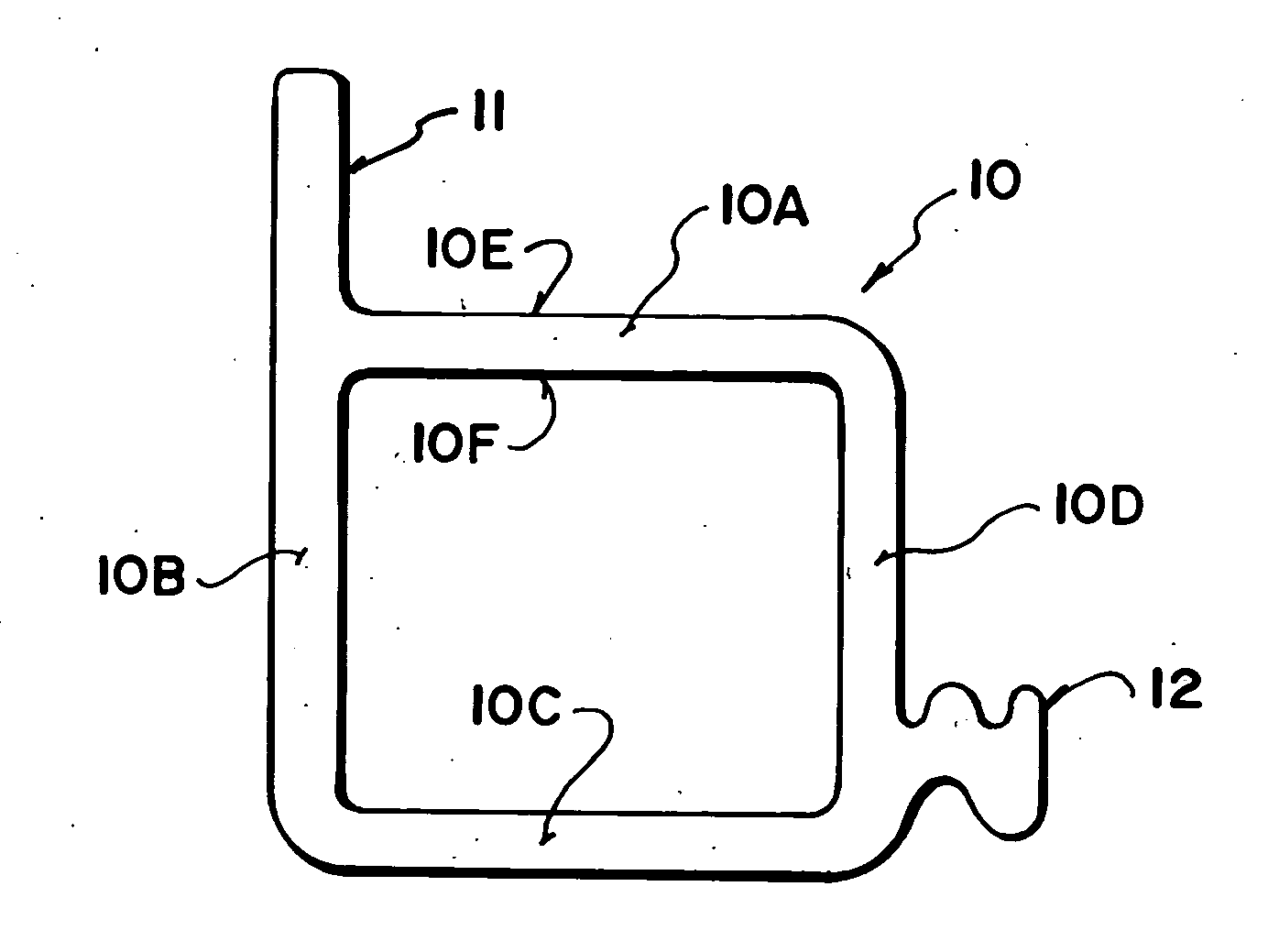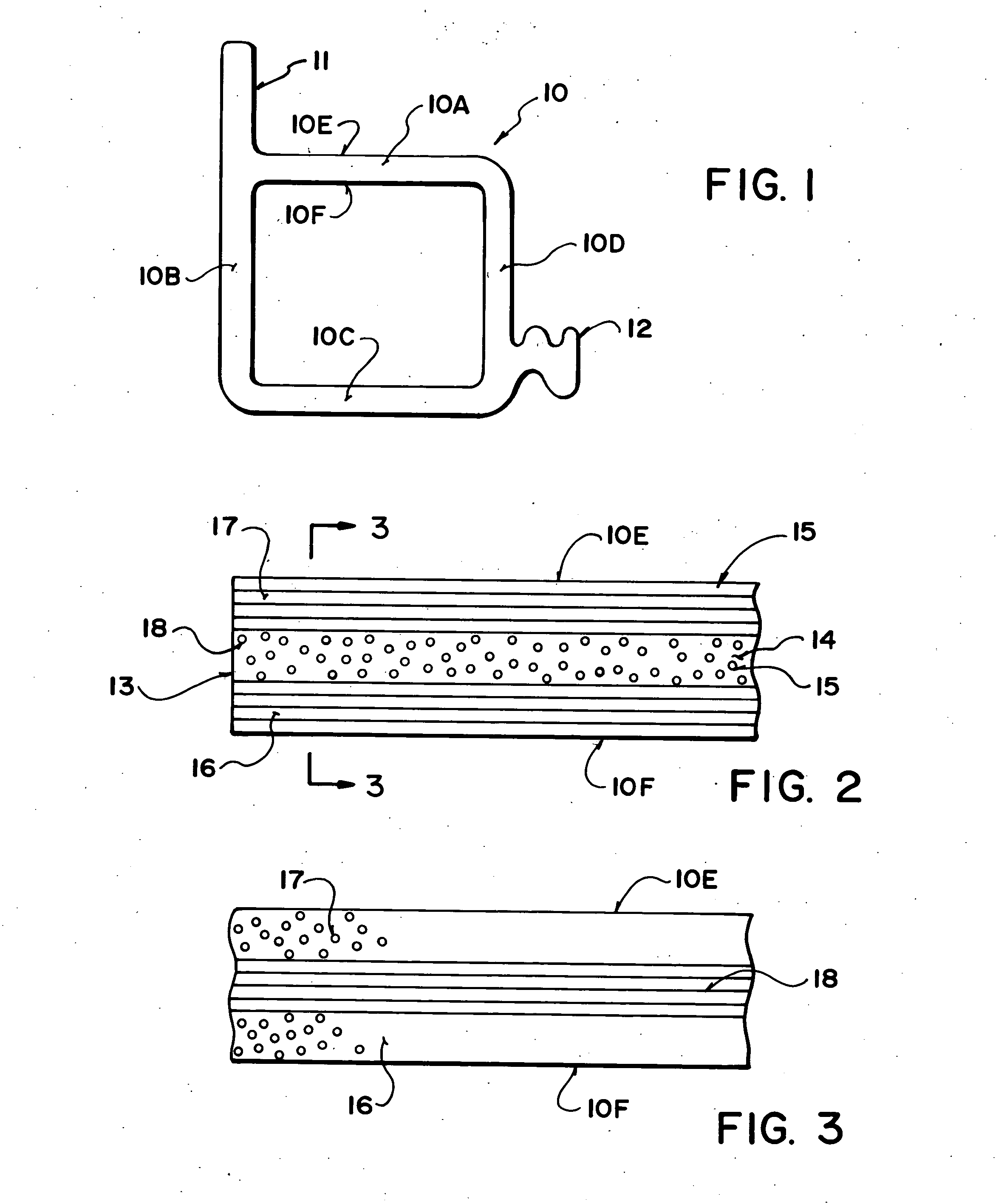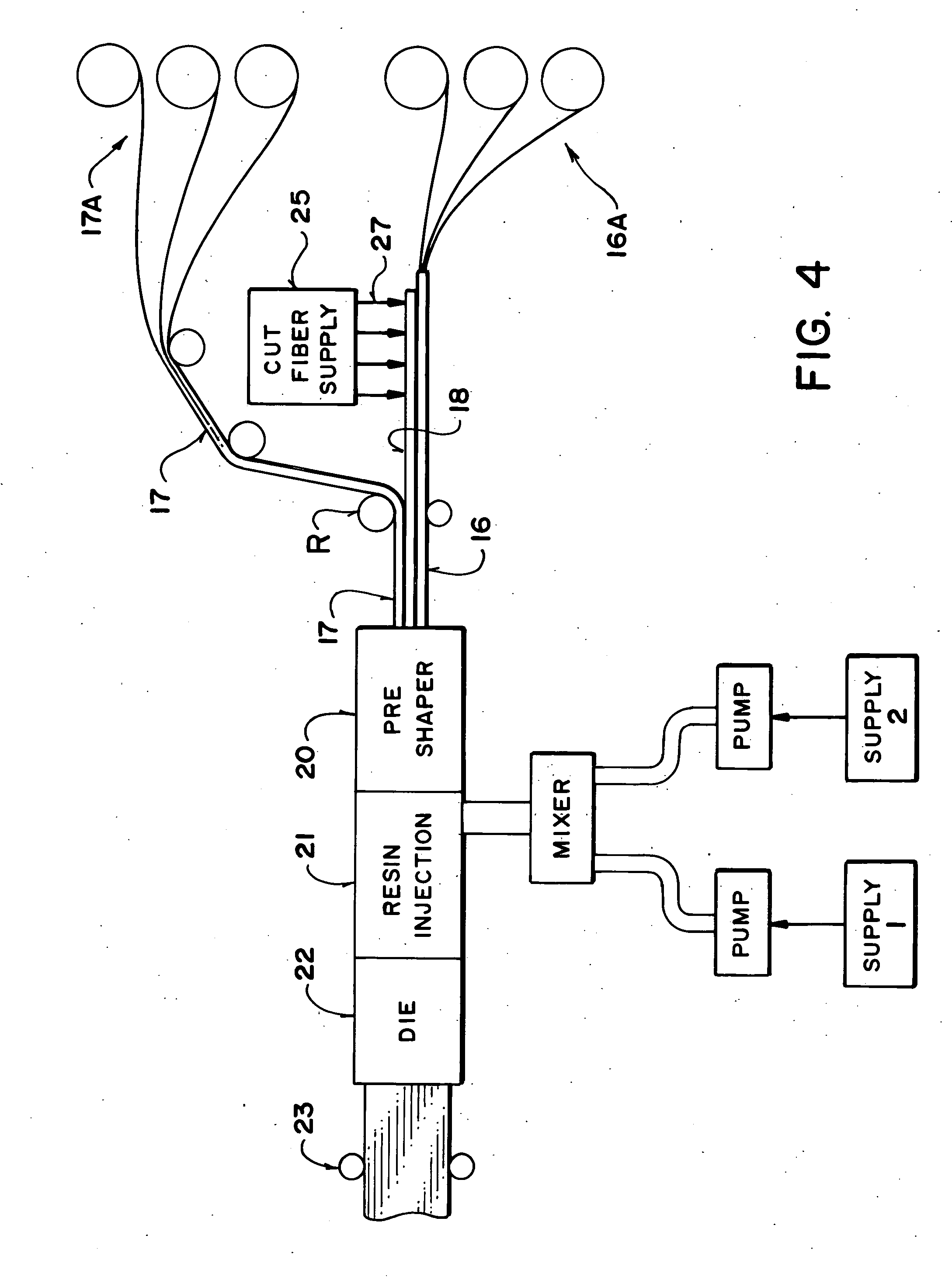Pultruded part reinforced by longitudinal and transverse fibers and a method of manufacturing thereof
a technology of longitudinal and transverse fibers and manufacturing methods, which is applied in the field of pultruded parts reinforced by longitudinal and transverse fibers and a manufacturing method thereof, can solve the problems of low production efficiency, low production efficiency, and inability to meet the requirements of fenestration products, and achieves the effects of reducing wall thickness, reducing cost, and being suitable for fenestration products
- Summary
- Abstract
- Description
- Claims
- Application Information
AI Technical Summary
Benefits of technology
Problems solved by technology
Method used
Image
Examples
Embodiment Construction
[0068] In FIG. 1 is shown a typical cross section of a pultruded part which includes a hollow section 10, a leg 11 and a projecting portion 12. The hollow section 10 includes four walls 10A, 10B, 10C and 10D each of which has a thickness between an outer surface 10E and an inner surface 10F. Thus each wall part of the pultrusion must be manufactured in a manner which provides the necessary strength to prevent cracking of the part.
[0069] In FIGS. 2 and 3 is shown a cross section of one wall of the part which is cut to form an end face 13. These cross sections show that the wall of the part is formed from a resin 14 which is shaped to define the surfaces 10E and 10F and a volume of the part is defined by a resin material 15 which is interspersed between or permeated through fiber reinforcement 15 within the part. In the arrangement as shown, the fiber reinforcement includes a first layer 16 of longitudinally extending fibers, primarily rovings, a second layer 17 also of longitudinall...
PUM
| Property | Measurement | Unit |
|---|---|---|
| length | aaaaa | aaaaa |
| length | aaaaa | aaaaa |
| thickness | aaaaa | aaaaa |
Abstract
Description
Claims
Application Information
 Login to View More
Login to View More - R&D
- Intellectual Property
- Life Sciences
- Materials
- Tech Scout
- Unparalleled Data Quality
- Higher Quality Content
- 60% Fewer Hallucinations
Browse by: Latest US Patents, China's latest patents, Technical Efficacy Thesaurus, Application Domain, Technology Topic, Popular Technical Reports.
© 2025 PatSnap. All rights reserved.Legal|Privacy policy|Modern Slavery Act Transparency Statement|Sitemap|About US| Contact US: help@patsnap.com



